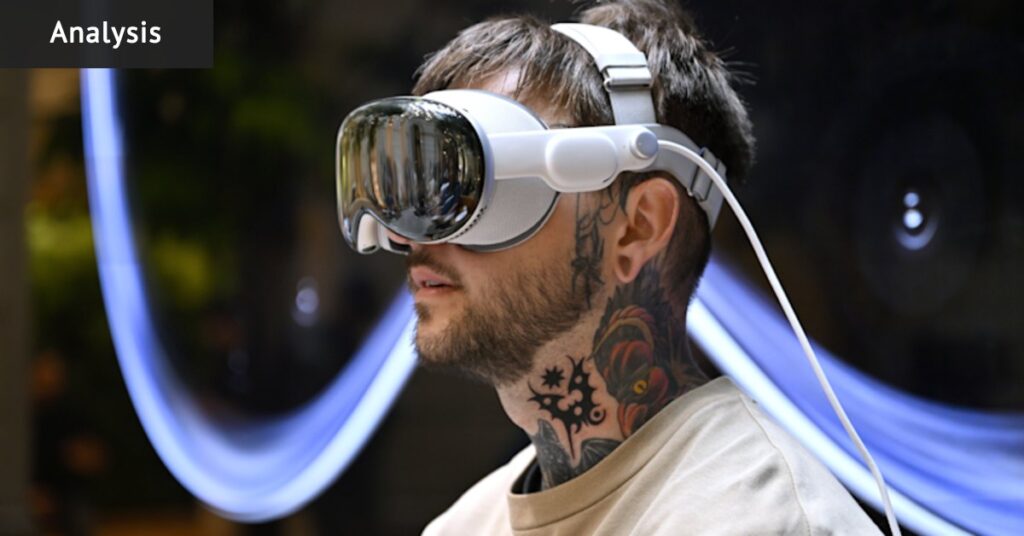
Let’s face reality: Virtual reality (VR) is struggling. At least for now. In 2025, the state of VR is more about contemplation than actual usage. Despite billions invested by tech giants like Meta, Apple, Sony, and Samsung, VR headsets remain expensive and uncomfortable, often collecting dust on shelves rather than revolutionizing our lives.
The technology itself is not the issue; it works as intended. The problem is that nobody seems to want to use it. The industry has failed to deliver a compelling reason for consumers to embrace VR, leaving the technology in a state of limbo.
The $6000 Paperweight
Take Apple’s Vision Pro, for example, which debuted in Australia last year at a staggering $5999. As Apple’s most advanced consumer technology, the Vision Pro boasts impressive features such as sharper displays, sophisticated eye tracking, and seamless integration with Macs. Despite these advancements, the headset feels like a solution in search of a problem.
The fundamental issue with the Vision Pro, and indeed with many VR headsets, is existential. Even when everything functions perfectly, users are left questioning why they are using a VR headset instead of a traditional laptop. Neither Apple, Meta with its Quest 3S, nor Sony with its PSVR 2 have provided a convincing answer to this question.
The Missing Killer App
Every transformative technology needs a “killer app”—a use case so compelling that it justifies the hardware’s existence. Smartphones had instant messaging and mobile internet; personal computers had spreadsheets and word processing. VR, on the other hand, lacks such a defining application.
While games like Beat Saber offer fun, they do not provide a compelling reason for prolonged use. Even highly praised titles like Half-Life: Alyx fall short of being must-have experiences. As one tech reviewer candidly admitted, “The reality is that even the most enthusiastic of tech reviewers only has so many hours in each day.”
This lack of a killer app is compounded by the rise of artificial intelligence (AI), which has captured the public’s imagination with practical applications on existing devices. AI’s ability to write emails and generate images has shifted the conversation away from VR, leaving it in the shadows.
The Physics Problem
Beyond the lack of compelling content, VR faces a fundamental hardware challenge: comfort. VR headsets are essentially computers strapped to your face, which is inherently uncomfortable. The Vision Pro weighs 725 grams, akin to an iPad Mini, while Meta’s Quest 3S, though lighter, requires a battery pack tethered to your pocket.
Comparatively, regular glasses weigh around 20 to 30 grams, a weight that is easily forgotten. VR headsets, however, constantly remind users of their presence, detracting from the immersive experience. Additionally, current VR displays fall short of achieving human-level visual fidelity, further hindering the technology’s potential.
The Isolation Chamber
Perhaps VR’s most significant flaw is philosophical: it requires users to block out the real world. While manufacturers have introduced pass-through video to mitigate this, the fundamental issue remains. VR is inherently isolating, making it socially awkward compared to more traditional gaming experiences.
This isolation is not just a minor inconvenience; it is central to the VR experience. While VR can be spectacular for entertainment, it is unsuitable for most real-world tasks. Some of the most successful VR applications are found in professional settings, such as training programs for Australian sheep farmers or virtual surgical practice platforms.
These applications highlight VR’s potential as a professional tool rather than a consumer product. In fields like flight simulation, medical training, and architectural visualization, VR’s value justifies its use despite the inherent discomfort.
The AR Alternative
While VR struggles, augmented reality (AR) presents a more promising future. Unlike VR, AR enhances reality rather than replacing it. Lightweight smart glasses, like Meta’s Ray-Ban models, offer a glimpse into a future where technology seamlessly integrates into daily life.
AR glasses could display notifications, navigation arrows, or information about the surroundings, providing practical benefits without the need for dedicated VR time. This approach aligns with how people naturally interact with technology, making AR a more viable path forward.
As companies like Snap, Google, and Apple explore AR glasses, the potential for a true consumer revolution becomes apparent. When someone successfully develops AR glasses that are both functional and fashionable, we may look back at today’s VR headsets as impressive but ultimately misguided attempts at immersive computing.
Until then, VR headsets like the Meta Quest will continue to serve as reminders of unfulfilled potential, collecting dust as consumers await a more practical and integrated technological future.
Stay updated on technology, gadgets, and gaming with our Technology newsletter every Friday. Sign up here.






